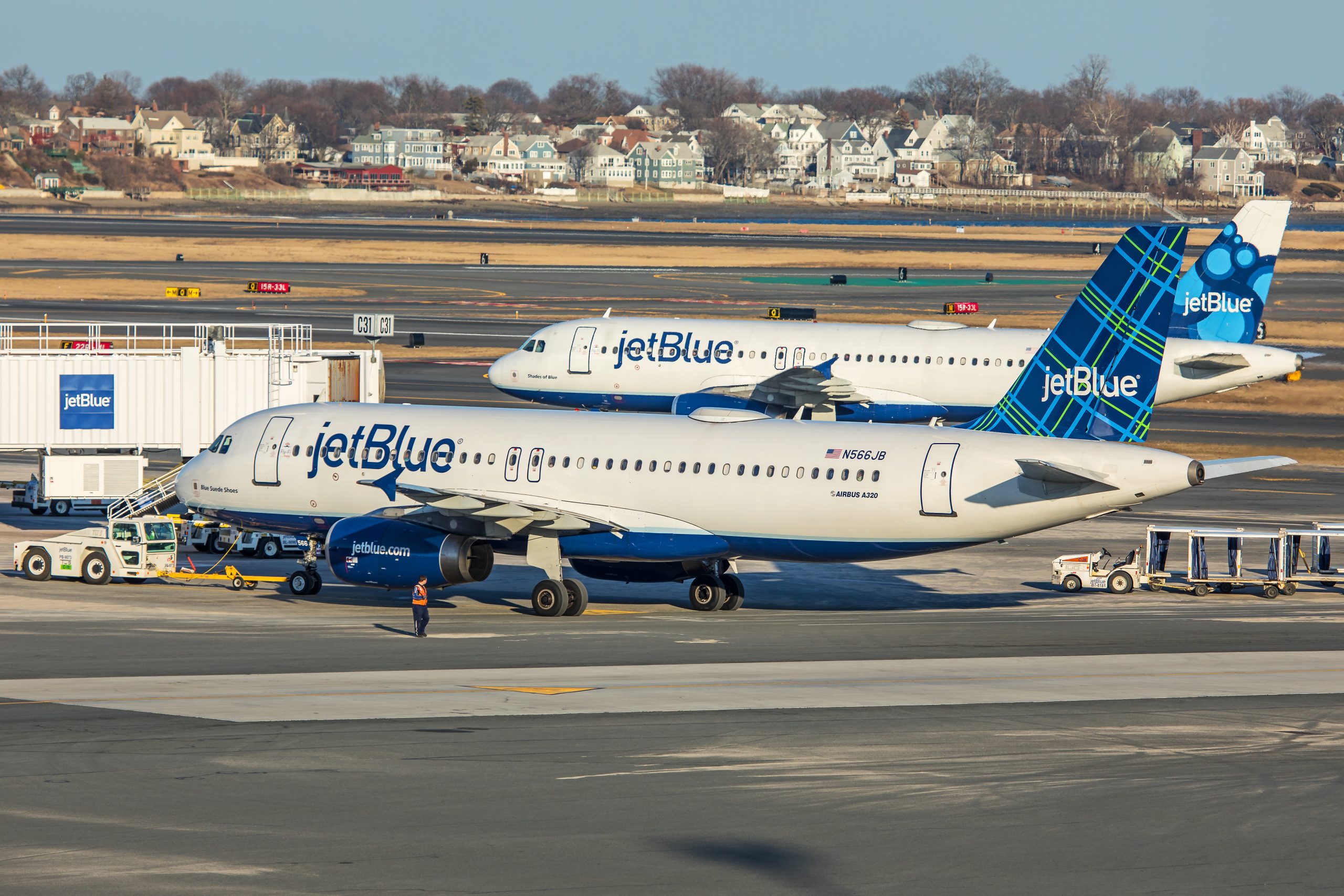
JetBlue Reveals Diminished First Quarter Earnings
On Tuesday, JetBlue announced that it has adjusted its annual revenue forecast. The carrier announced that its revenue will be…

A Singapore Airlines Airbus A380 in New York. (Photo: AirlineGeeks | Hemal Gosai)
Being the largest commercial aircraft ever built certainly had it perks back then, especially when it came along with the title as the world’s first fully double-decked passenger aircraft.
The Airbus A380 came as a big hit initially, with many airlines wanting to take advantage of the higher number of passengers carried per flight with the then-new aircraft.
As the years went by however, the competition rose from Airbus itself as the manufacturing giant produced more fuel-efficient and streamlined aircraft such as the A350s, which quickly gained much more popularity compared to the A380.
And if one blow wasn’t enough, another came from Boeing as it produced an additional variant to its already popular workhorse – the B777-300ER, and also produced the fuel-efficient B787 Dreamliner.
The popularity of the Airbus superjumbo could not have gotten any worse, but yet it unfortunately did when the Covid-19 pandemic hit and it’s high operating cost did not seem feasible anymore.
Unexpectedly, the world’s biggest long-haul aircraft had reached the end of the runway far sooner than any airline would have anticipated, with airlines such as Air France having already retired its entire fleet.
Perhaps what was most unexpected was when Singapore Airlines – who had been the launch customer of the A380 – became the first airline to retire the aircraft prior to the pandemic in 2017.
After just a decade in service, a total of five aircraft were retired from the national carrier’s fleet, as it looked towards more fuel-efficient successors for fleet modernization.
Then came the pandemic that resulted in the airline deciding that the majority of its A380 fleet would not be returning to service.
The five previously retired A380s were flown overseas for either permanent storage or to the aircraft boneyard for scrapping, which is usually the case for retired aircraft.
For the first time in the history of Singapore Airlines though, the airline chose to scrap these two superjumbos, locally at Changi Exhibition Centre.
Accompanying the two superjumbos was a retired B777-200ER as well, registered as 9V-SQJ, which was one of the oldest aircraft type in the Singapore Airlines fleet.
The two A380s, registered as 9V-SKH and 9V-SKG respectively, were delivered in May and June of 2009. They were specially towed to the scrapping site in the late night of Monday, Oct. 4.
So why scrap these superjumbos locally, instead of the traditional send-off overseas? With the pandemic having forced the closure of some international borders, Singapore Airlines found it more economical to dismantle the aircraft in Singapore instead.
While it may be the end of flight service for these two A380s, it’s not the end of their usefulness as usable parts upon scrapping. Parts from the jets will be kept and inventoried as spare parts to maintains the airline’s current fleet of operating A380s.
And as part of Singapore Airlines fairly new upcycling initiative, recyclable aircraft materials such as cabin windows, furnishings, galley equipment and even seats, will all be repurposed to create unique retail products or to support numerous Singapore-based organizations.
Additionally, Singapore Airlines hopes that the initiative allows for these aircraft materials to be used as educational tools to promote awareness and engage learning in local educational institutions.
The entire scrapping project would take a number of months, and will be done so by the airline’s engineering division alongside a project management specialist.
Fascinated by aircraft from a very young age, Charlotte’s dream was to work alongside the big birds one day. Pursuing her dream, she went on to achieve her diploma in Aviation Management and is currently working on her degree in Aviation Business in Administration with a minor in Air Traffic Management. When she’s not busy with school assignments, you can find her aircraft spotting for long hours at the airport. In Charlotte’s heart, the Queen of the Skies will always be her favorite aircraft.
Receive a daily dose of the airline industry's top stories along with market insights right in your inbox.

On Tuesday, JetBlue announced that it has adjusted its annual revenue forecast. The carrier announced that its revenue will be…

Royal Air Maroc and Safran have deepened their collaboration in aircraft engine maintenance. In celebration of its 25th anniversary, Safran…

The importance of the North American market to Fiji Airways has been further highlighted with the announcement of an interline…



